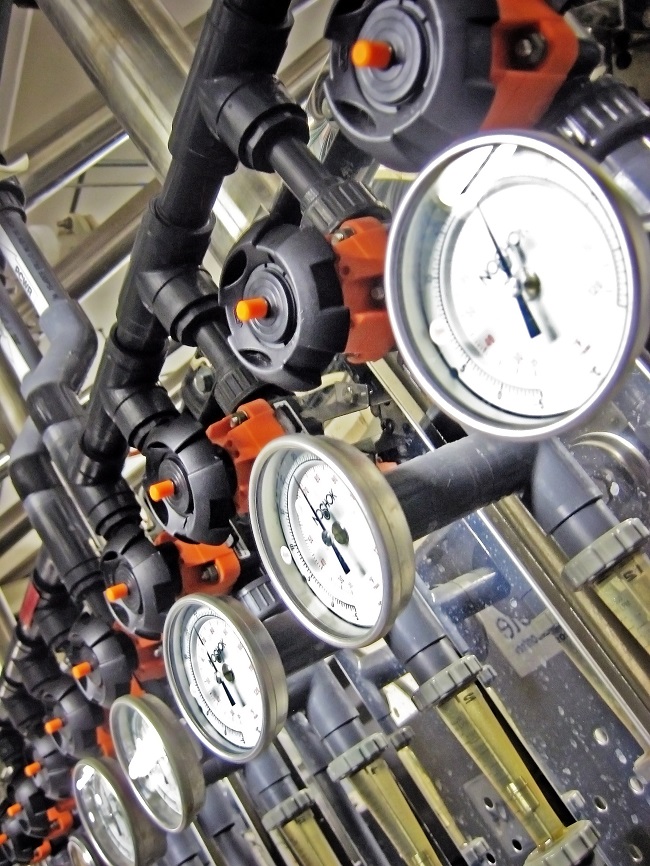Which type of flowmeter for my steam application?
In Part 1 of this series of Tutorial articles on different types of flowmeters for steam applications, we covered the advantages, disadvantages and typical applications for Orifice plate flowmeters, Turbine flowmeters and Variable area flowmeters.
Different types of flowmeters have their own advantages, limitations & application benefits. To ensure accurate and consistent performance from a steam flowmeter, it is essential to match the flowmeter to the application.
This Tutorial article will cover:
• Spring loaded variable area flowmeters
• Pitot tube flowmeters
• Vortex shedding flowmeters
Follow the links for more tutorials on flowmeters:
Tips for installing flowmeters
Tutorial on Paddle flow meters
Flow meters for gas measurement
Spring loaded variable area flowmeters
[pif_tabs]
[pif_tab title="Advantages:"]
- Robust.
- Turndowns of 25:1 are achievable with normal steam velocities (25 m/s), although high velocities can be tolerated on an intermittent basis, offering turndowns of up to 40:1.
- Accuracy is ±2% of actual value.
- Can be tailored for saturated steam systems with temperature and pressure sensors to provide pressure compensation.
- Relatively low cost.
- Short installation length.
[/pif_tab]
[pif_tab title="Disadvantages:"]
- Size limited to DN100.
- Can be damaged over a long period by poor quality (wet and dirty) steam, at prolonged high velocity (>30 m/s).
[/pif_tab]
[pif_tab title="Typical applications:"]
- Flow metering of steam to individual plants.
- Small boiler houses.
[/pif_tab]
[/pif_tabs]
Pitot tube flowmeters
[pif_tabs]
[pif_tab title="Advantages:"]
- Presents little resistance to flow.
- Inexpensive to buy.
- Simple types can be used on different diameter pipes.
[/pif_tab]
[pif_tab title="Disadvantages:"]
- Turndown is limited to approximately 4:1 by the square root relationship between pressure and velocity as discussed in Tutorial 4.2.
- If steam is wet, the bottom holes can become effectively blocked. To counter this, some models can be installed horizontally.
- Sensitive to changes in turbulence and needs careful installation and maintenance.
- The low pressure drop measured by the unit, increases uncertainty, especially on steam.
- Placement inside the pipework is critical.
[/pif_tab]
[pif_tab title="Typical applications:"]
- Occasional use to provide an indication of flowrate
- Determining the range over which a more appropriate steam flowmeter may be used.
[/pif_tab]
[/pif_tabs]
Vortex shedding flowmeters
[pif_tabs]
[pif_tab title="Advantages:"]
- Reasonable turndown (providing high velocities and high pressure drops are acceptable)
- No moving parts.
- Little resistance to flow.
[/pif_tab]
[pif_tab title="Disadvantages:"]
- At low flows, pulses are not generated and the flowmeter can read low or even zero.
- Maximum flowrates are often quoted at velocities of 80 or 100 m/s, which would give severe problems in steam systems, especially if the steam is wet and/or dirty. Lower velocities found in steam pipes will reduce the capacity of vortex flowmeters.
- Vibration can cause errors in accuracy.
- Correct installation is critical as a protruding gasket or weld beads can cause vortices to form, leading to inaccuracy.
- Long, clear lengths of upstream pipework must be provided, as for orifice plate flowmeters.
[/pif_tab]
[pif_tab title="Typical applications:"]
- Direct steam measurements at both boiler and point of use locations.
- Natural gas measurements for boiler fuel flow.
[/pif_tab]
[/pif_tabs]
Click here to read part 1 of the flowmeter tutorials.
Get the latest process industry news
Interested in receiving even more industry-leading news from Process Industry Forum delivered directly to your inbox? Then sign up to our free newsletter. Bringing you the latest news, trends, innovations and opinion from across the process industry, our exclusive newsletter gives you all the industry insights of the moment in one, easy-to-digest bulletin. Stay ahead of the competition with regular process industry news instalments from PIF.


